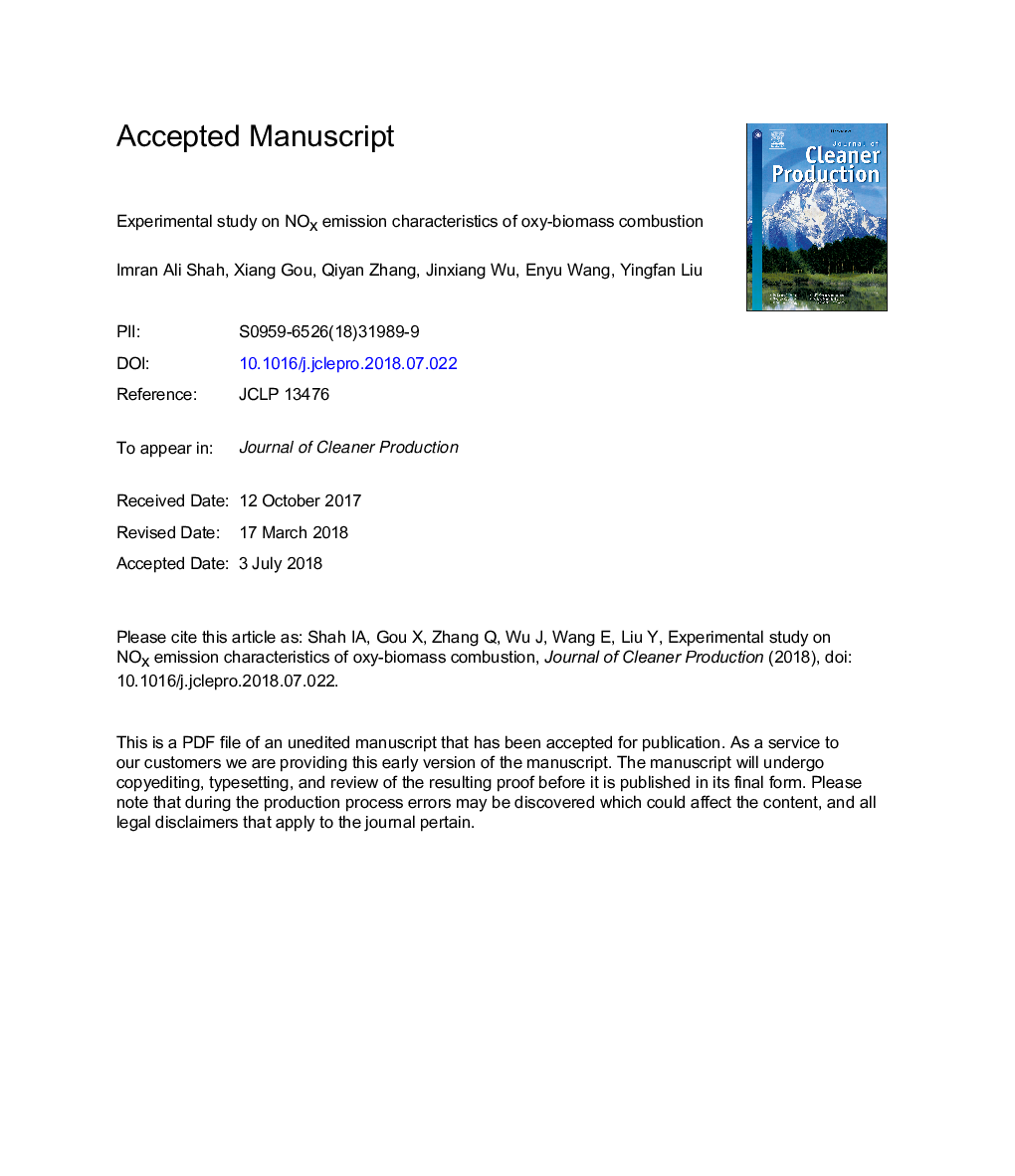| Article ID | Journal | Published Year | Pages | File Type |
|---|---|---|---|---|
| 8093186 | Journal of Cleaner Production | 2018 | 36 Pages |
Abstract
Oxy fuel combustion technique has been in practice since last three decades powered mainly by coal or other fossilized fuels. A similar technique was applied to biomass thermochemical conversion keeping in consideration zero carbon and renewability features of biomass. Experimental investigation of combustion characteristics of lignocellulose based biomass including maize stalk, wheat straw, rice husk and groundnut hull has been carried out in this study. Objective was to determine the behavioral changes in fuel inherent nitrogen during combustion and its distribution between elemental nitrogen (N2) or nitrogen oxides (NOx) after the combustion. Approximately isothermal conditions with temperature range from 700â¯Â°C to 1200â¯Â°C and various oxidizer atmospheres comprised of mainly oxygen with corresponding nitrogen or carbon-dioxide gases were opted for the experimental work. Results revealed that average 78% relative NOx reduction efficiency for four selected biomasses (81.69% maize stalk; 68.69% wheat straw; 88.64% rice husk & 72.99% groundnut hull) was achieved under 21% O2/79% CO2 atmosphere over the corresponding 21% O2/79% N2 atmosphere. Through enhancing O2 ratio in oxy biomass combustion atmosphere i.e. 30% O2/70% CO2 and comparing NOx reduction efficiency with its corresponding 30% O2/70% N2 atmosphere; an average relative NOx reduction efficiency of 80.49% i.e. (maize stalk: 78.94%, wheat straw: 79.11%, rice husk: 88.60%, groundnut hull: 75.30%) was attained. It was concluded that oxygen played key role in achieving satisfactory reduction in NOx emissions.
Keywords
Related Topics
Physical Sciences and Engineering
Energy
Renewable Energy, Sustainability and the Environment
Authors
Imran Ali Shah, Xiang Gou, Qiyan Zhang, Jinxiang Wu, Enyu Wang, Yingfan Liu,
